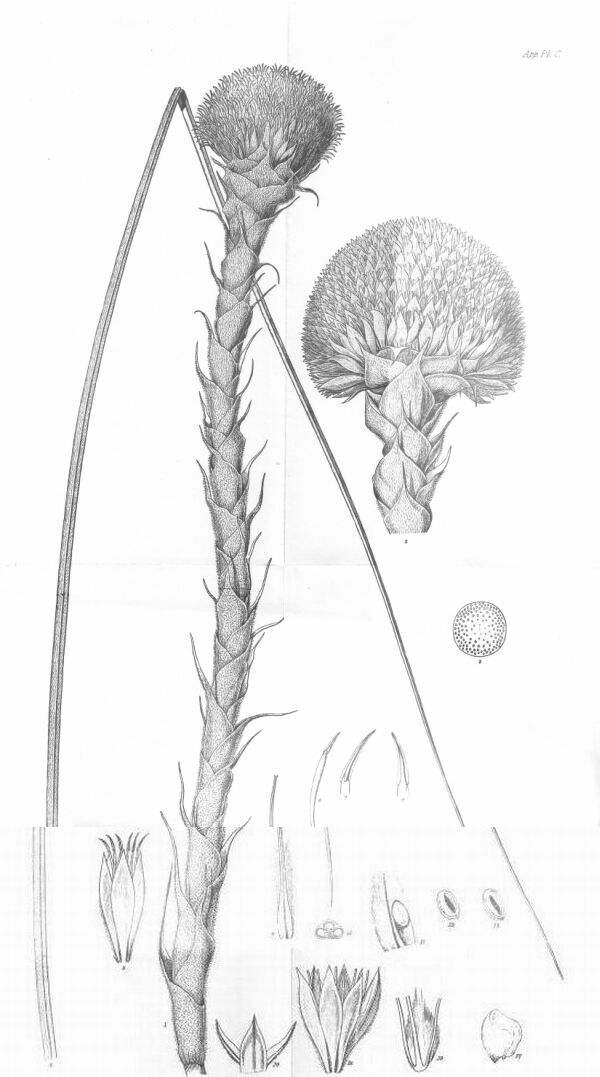
One of the most notable images of early Albany is the Panoramic View of King George's Sound, Part of the Colony of Swan River, a well known hand coloured etching and aquatint from 1834. It was created from sketches by Lieutenant Robert Dale and etched by Robert Havell. Dale was stationed at King George's Sound in early 1832, six years after the English commenced a colony there. This section of the view shows Lake Seppings and Oyster Harbour in the distance. On the left of the drawing is the cleared and neatly plowed square of land on the government's Strawberry Hill farm.
 |
| The view today from a similar vantage point |
The foreground on the top of Mt Clarence is now very overgrown - that shrubbery in the foreground is a good three to four metres high. On the day I took this photograph there was a bronzewing pigeon scratching in the undergrowth like a tiny chook - something I've never noticed them doing before.
In the panorama by Dale/Havell the foreground has a number of small herbaceous plants indicative of fairly open ground, with bigger shrubbery further down the hill. However all the land on the lower plains near the lakes is grassland interspersed with clumps of trees. For the Aborigines it would have provided good feed for kangaroos and made hunting that much easier. The grasslands were managed with regular burning to keep the bush at bay. Edge habitats are usually regarded as being more species rich than each of the individual habitats, so that makes good sense too.
It is strange how the present day golf course imitates the original landscape as managed by the Aborigines before colonisation. There must be something about a parkland cleared landscape that is pleasing to our psyche. For the golfers I suppose it is more of a challenge having the fairways edged by a good bit of rough.
I don't know if the tall Kingias, shown in the centre of the drawing, would have actually been there or were placed in the drawing because they represented the 'exotic'.
I can say there are smaller Kingia's still growing near the top of the hill, but they are crowded out by the thick and tall vegetation that has grown up around them. It must be quite a while since a fire went through; they have long skirts hanging down from the top.
Believe it or not there is a Kingia growing in this tangle of shrubbery - catching the sunlight in the middle ground.
Here is a botanical illustration of Kingia australis, originally published in 1827 as part of Captain Phillip King's book on his travels mapping the coasts of Australia from 1818 to 1822. The engraving is by J. Curtis.
Today, there are a few big old trees growing on the hill, all very spreadeagled, unlike the younger trees that are growing closely together and straight up. In their youth they must have had a lot less competition for space and light to enable them to grow wide rather than up. Perhaps a bit of being sculpted by the wind too - something which isn't a problem today, the bush is so dense.

I find it very interesting, looking and comparing the past and the present, and trying to image what it was really like back then. In some ways it is like seeing the landscape, and ways of managing it, with totally new eyes. It certainly raises a lot of questions for me about how one 'chooses' just what is the 'right' ecological landscape.
Link to Gutenberg Phillip King's book.


This is a great project Janine. I really like what you are doing. Isn't it interesting how Dale's panorama encapsulates so many different ideas about colonisation and culture in these parts? For example, on the cover of Tiffany Shellham's book, Shaking Hands on the Fringe, there is the red coat holding a bottle of wine and another shaking hands with a Menang man. And now you have shown me another perspective. Very cool.
ReplyDeleteBy the way, have you seen Christopher Pease' work on the waugal, taken from De Sainson's painting of the same aspect? There is a copy hanging in the postgrad's room.
I love that panorama because the more you look at it the more there is to 'see'. The first time I looked at it, I thought, oh yeah, just another landscape - how wrong I was.
ReplyDeleteAnd Pease's work, another type of re-imagining; reasserting the original cultural landscape onto the European vision - great stuff.